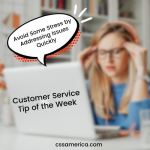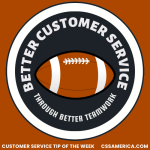
We often say that companies need to make it “Easy” on the customer to do business. It needs to be easy to schedule a doctor’s appointment. It needs to be easy to renew season tickets. It’s got to be easy to reserve a park shelter. We’ve got to make it easy for parents to register their children for school.
By let’s look at “Easy” as it relates to logistics. We did a brief research study for a grocery chain many years ago, and we asked where customers shopped and why. The #1 reason why people shopped at a particular grocery store was its proximity to their home. It was all about…convenience.
You have to make it convenient for the customer to get to your products/services, your policies/procedures, your processes, and people.
How close – literally – are you to your customers? Can those customers who prefer or need the face-to-face get to you quickly?
How about those that prefer the phone? Can they call one basic number as the window to access all your services, all the answers to their questions? How accessible is the number to the average first-time customer?
Think about those loving the web and smart phones for communication – is contact with your organization available at a click or a voice command? Is your business (again) literally at their fingertips?
Before working to make your organization incredibly easy to deal with once the customer gets to you, first make yourself convenient to them.
For Some, it’s All About Convenience.
Signup for FREE Tips! Contact Us More Resources for You Visit Our Home Page























